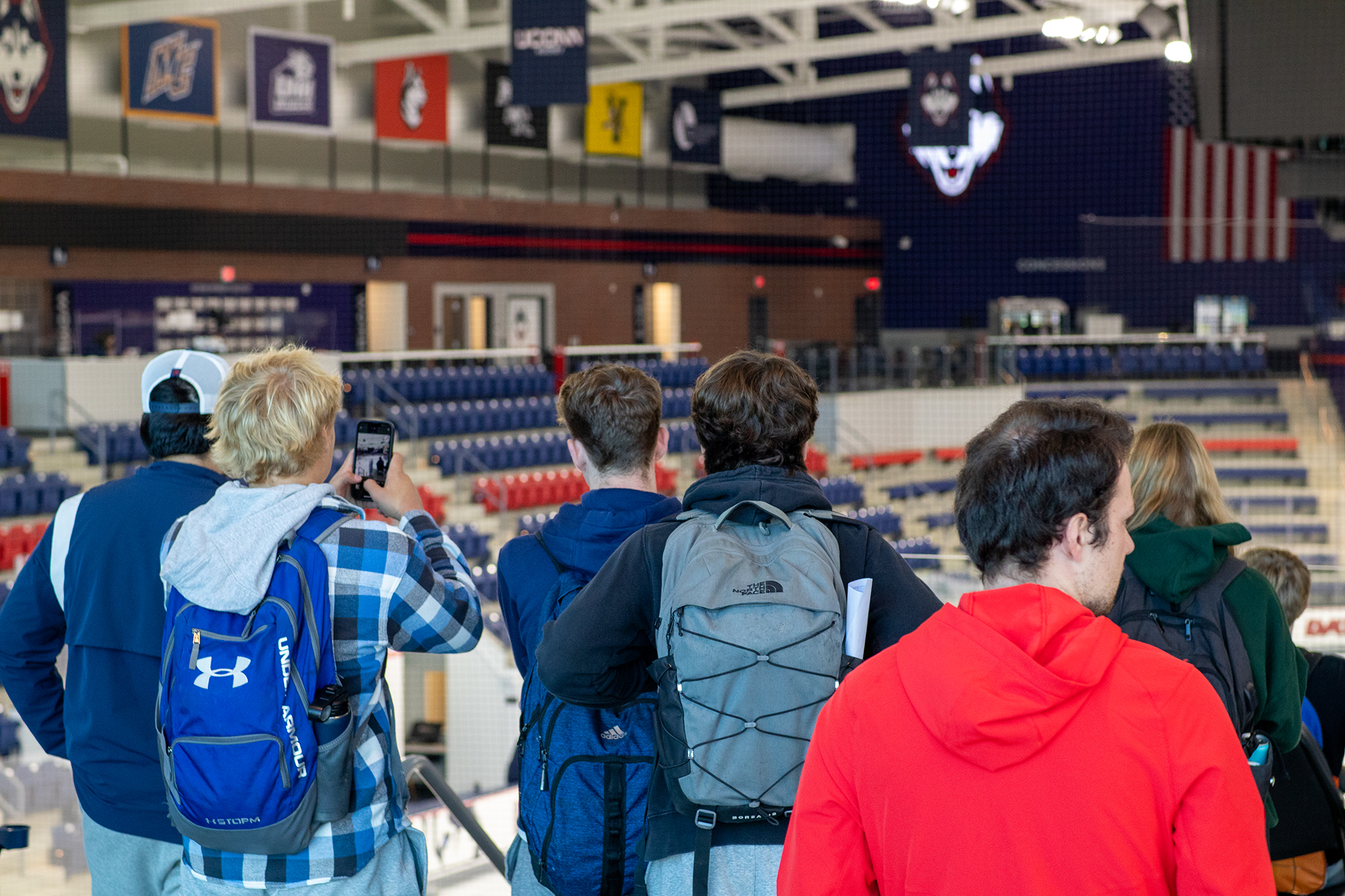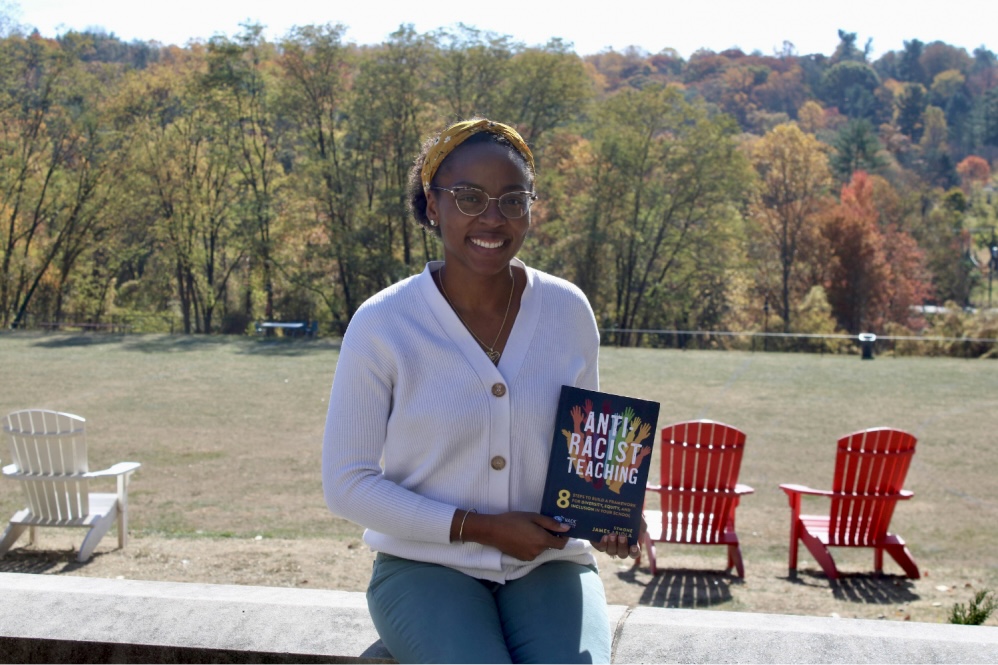Albert Waugh, a University of Connecticut professor attending an academic conference, was preoccupied with the unrelenting Chicago heat and his dinner plans, when headlines about a deadly circus fire caught his eye on another hotel patron’s evening newspaper across the room.
It was July 6, 1944, and Waugh, who’d been traveling since February, was eager to return to his work, friends, and the familiar and peaceful Storrs surroundings. The headline, which they presumed to refer to a sad but distant event, was absorbed briefly and soon forgotten.
“We commented on the fact, but didn’t realize at the time how interested we were to become in the news,” Waugh, an agricultural economics professor who would later become UConn’s provost, wrote in his journal.
Only later that night, as he and others ate ice cream in the hotel drug store, did they spot another evening newspaper and discover to their horror that the state of Connecticut was experiencing a tragedy of historic proportions.
“Here we saw the newspapers which told us that the horrible fire had been at Ringling Brothers and Barnum & Bailey Circus in Hartford, Connecticut. This frightened us, because we realized at once that many Storrs people always go to this circus,” Waugh wrote, unknowingly prescient in his fears.
Seventy-five years ago on Saturday, the Hartford circus fire left 168 dead, more than 500 injured, and communities in shock across the state – including those in and around UConn, which was hard hit.
Waugh’s fears were well founded, as he soon learned when he called the minister of the Storrs Congregational Church and other friends who relayed the toll: “We were shocked and dazed,” Waugh wrote. “What a horrible shock.”
The dead included Waugh’s friend Edwin G. Woodward, the dean of UConn’s College of Agriculture; his wife, Lucille Woodward, who was a former Connecticut state legislator; and their 5-year-old grandson, Peter Hines, who was staying with them while his parents awaited the imminent arrival of another baby back home in Salisbury.

The fire also killed Elizabeth Hamilton Putnam, a former UConn home economics instructor whose husband was a well-known agriculture professor; their 9-year-old daughter, Mary Spencer Putnam; and Edith Brown Cortiss, a widowed School of Education instructor who’d joined the others on impulse because she’d never been to the circus. She wasn’t known to be missing until her jacket was found in the dean’s car after the fire.
Other groups of Storrs families had also gone to the circus that day and survived, including two neighbor children who wed 17 years later, and a woman whose husband was fighting in France and who escaped with her three children – and who died 55 years later on the fire’s anniversary.
Also fleeing the fire with his family: Wilfred B. Young, UConn’s assistant dean of agriculture, who later was named dean to fill the spot left open by Woodward’s death, and who built on Woodward’s work to help vault the now-named College of Agriculture, Health, & Natural Resources (CAHNR) to national prominence.
But while the state and the University were irrevocably changed by that summer day, UConn was able to bring some light into the darkness of the situation by providing a free education for a young hero who had slit a hole in the tent’s fabric with his pocket knife to help hundreds of people escape the smoke and flames.
Years later, several local doctors, nurses and other professionals brought their experiences treating fire victims that day into their work at UConn, including some who were key to establishing important medical and social work programs at the University.
The 75th anniversary of the fire is an opportunity for UConn to remember those in its community who were lost in the tragedy – and to recall how it was able to use its academic, medical, and community service strengths to contribute to the healing.
‘I’m Going to Take my Boy and the Youngsters to the Circus’
When the circus rolled into Hartford in July 1944, only a month had passed since allied forces in World War II had landed at Normandy, France, to attack German forces in a pivotal battle that would come to be known as “D-Day.”
Word was still filtering in about the Connecticut deaths and injuries in that military action, including several UConn alumni and students who had either enlisted upon graduation or left school to serve when the hostilities broke out. By war’s end, UConn would lose at least 110 members of its community, three-quarters of whom had either just graduated or had been students at the University when they went into military service.
Trying to keep their wartime worries at bay – and seeking a distraction from the heat and humidity that blanketed the state that July – a trip to the circus must have seemed appealing, especially for parents seeking new diversions for their children.
“I had gone to the dean’s office that morning and said, ‘Dean, I’d like this afternoon off because I’m going to take my boy and the youngsters to the circus,’” Young, who was assistant dean of the College of Agriculture, recalled years later about his conversation with Woodward.
“He looked up and me and he grinned and said, ‘Well, I’ll see you there – my grandson’s here.’ We went to the circus and as we parked our car, down the line about four or five cars I saw his car. I said, ‘Well, he’s here.’ He was a great kidder, and I didn’t know whether he was kidding me or not.”

Woodward and his wife Lucille brought their grandson, Peter Hines, along with Elizabeth Putnam and her daughter Mary, and they were joined at the last minute by Edith Cortiss, a friend and fellow UConn instructor who rented part of their house on Horsebarn Hill Extension and who’d been widowed when her husband was killed 17 years earlier in a farming accident.
As it turns out, several groups of families and friends had traveled that day from Storrs to Hartford, many of them the spouses and children of UConn faculty and staff members. But while those circus patrons survived – albeit many with nightmares for years to come – Woodward and his party were not to be so fortunate.
News reports from the time say a fire broke out under the big top, sending billowing black smoke through the air as the flames licked the gasoline and paraffin mix that had been used to waterproof the tent fabric.
As spectators scrambled to escape, Young was about halfway up the bleachers with his son and others. “I said, ‘Sit still, let them crawl over us.’ When the people got out of the way, I dropped the youngsters down to the ground through the bleachers and we went out the back side. By that time, the entire tent was on fire … The whole tent was down and burning, burning the bleachers.”
They returned to Young’s car, not knowing what else to do – and that’s when he saw the dean’s car sitting where they’d last seen each other, unoccupied and unclaimed.
When they were later allowed to leave, Young went straight to the State Armory in search of information about Woodward and his group. From there, he headed to a hospital where he found Woodward bandaged from head to foot, so grief-stricken that he could only say, “Poor Lucille! Poor Lucille!”
Lucille Woodward had died in the fire and her husband, who later told the nurse that he’d witnessed her death, said repeatedly that he wanted to die himself. His grandson had also died; so had Elizabeth Putnam, her daughter Mary, and Edith Cortiss.
Young helped authorities identify Elizabeth Putnam’s body by prying open her fist and finding her initials in her wedding ring; he recognized little Mary and identified her, too.
Back in Chicago, Albert Waugh was collecting as much information as he could glean by phone: “[A friend] told me that Gene Woodward was on the danger list at the hospital, his wife dead, and their grandson dead. What a horrible shock.”
Woodward survived the night, but was traumatized by witnessing his wife’s death and kept telling others, “I certainly used damned poor judgment,” according to Waugh.
A person who knew the Woodwards and had been sitting near them later explained that Woodward apparently hadn’t realized the severity of the fire and, after telling those in his group to remain calm, he went back to their seats for his forgotten hat.
He died of his injuries the next morning, believing he was to blame for the deaths in his group, although later reconstructions of the fire suggest that even many people who thought they were close to safety ended up trapped. Even without the decision to get his hat, Woodward and his group were in such a perilous location they might have been blocked anyway by the metal chutes in place to move circus animals in and out of the tents.

For his part, W.B. Young reluctantly agreed to serve as Woodward’s replacement, a role he held for a year as the University searched for a new dean. Although he initially didn’t want the job, he eventually accepted the role and ended up serving for 22 years, guiding the college through arguably one of its most pivotal periods.
Woodward was honored by creation of a scholarship that granted financial aid to agriculture students well into the 1950s. The local 4-H Club also planted an oak sapling in his memory in April 1945 on a slope near the President’s Residence on Oak Hill.
‘I Never Thought of Myself as a Hero’
There was little to provide comfort to Connecticut in the days and weeks following the fire, as families mourned their loved ones and sought answers about what had caused the tragedy.
UConn President Albert Jorgensen, who’d returned with his wife from their shoreline vacation for the Woodwards’ memorial service, was facing criticism for missing the services for Mrs. Putnam and her daughter the day earlier.
Mourning his friends, guiding the campus community through its grief – all while working on the delicate task of replacing the dean and running the University during wartime – Jorgensen might rightfully have been apprehensive when Connecticut Gov. Raymond E. Baldwin reached out to him a few days after the fire.
But this turned out to be a spot of brightness in that otherwise dark summer: News was spreading about a 13-year-old boy named Donald Anderson of Columbia, Connecticut, who’d used his pocket knife at the circus to cut a slit in the tent canvas that allowed untold numbers of people to escape.
Fifty years later, in an interview with the New York Times marking the fire’s anniversary, Anderson explained, “I remembered I had my pocket knife, and I took it out and made a slit in the canvas and crawled out. A lot of other people followed me … I never thought of myself as a hero. What I did was a matter of self-preservation.”
The “boy hero,” as he was being called, was front-page news across the country – and the governor, with Jorgensen’s enthusiastic agreement, believed he should be rewarded with a full scholarship to UConn in recognition of his quick thinking and actions estimated to have saved hundreds of lives.
It was a sentiment shared by many. In the July 12, 1944 edition of the Hartford Courant, a person identifying himself or herself as “A Reader” from Middletown urged the state to reward Anderson.
“I have no knowledge in regard to any plans that he and his parents may have made for his education,” the reader wrote. “Whatever they may be, it seems suitable to me that the public of the community now assume the privilege of providing him with a fund amply sufficient to pay the cost of any course of education he may choose – suitable also that any such fund, if raised, be regarded as fully earned by the boy’s own actions.”
The Fire’s Legacy at UConn and Beyond
In the 1955 edition of UConn’s yearbook, The Nutmeg, graduating senior Don Anderson is still easily recognizable as the onetime “boy hero.”
He still has the serious look and thick dark hair, although he’s now in a bow tie rather than the straight ties he wore as a 13-year-old being photographed for the newspapers and later receiving the Connecticut Distinguished Civilian War Service Medal from Gov. Baldwin.
Anderson, who earned his UConn degree in sociology, went on to a long career in insurance and enjoyed collecting coins and fishing in his retirement, before his death in 2012 at age 81. He’d also continued to help others as a member of the Shriners, which focuses on philanthropic efforts, especially children’s medical care.
When he graduated from Windham High School in 1948, the quote under his photo was fitting of a boy hero who’d taken his UConn education and grown into a life worthy of admiration: “I dare do all that may become a man.”
The circus fire also provided difficult but invaluable medical experience for many physicians and nurses at Hartford-area hospitals, including several who treated circus fire patients at McCook Hospital early in their careers. When the state assigned UConn to take over McCook’s operations in 1967, as the Farmington campus was being built, several of the longtime physicians there played key roles in developing UConn’s medical services and the new health center.
Dr. Milton Carl Fleisch, for instance, was physician in charge at McCook during the circus fire and organized, cared for, and treated many of the victims, according to his obituary. He later was a clinical associate in pediatrics for UConn Health, becoming deeply involved in creation of the new facility in Farmington.
The experience also shaped many other people who brought skills they’d learned to UConn and UConn Health in medical, nursing, and other fields.
Josephine “Jo” Vignone Turner, for instance, was a relatively new social worker at McCook Hospital on the day of the circus fire, and she earned several commendations for her tireless work and dedication to the victims she served. She stayed at McCook until it closed in 1975, bringing her experience to UConn and becoming the first director of social work at the newly founded John Dempsey Hospital. She died in 2009.

This weekend, people from throughout the region are expected to visit the Hartford Circus Fire Memorial site at 350 Barbour St., for a ceremony to mark the anniversary and honor the victims. The event starts at 2:30 p.m., Saturday, July 6, nearly the exact time that the fire broke out 75 years ago.
The memorial includes several plaques describing how events unfolded, with a central plaque situated where the big top’s center ring was located that day. The names of each victim, including those from UConn, are listed on the memorial.
Edwin G. Woodward’s body was believed to have been cremated after the joint memorial service held for him and his wife Lucille, whose body was never found. She remains among six people officially listed as missing.
Edith Cortiss was buried in her family’s plot in Thompson. Putnam and her daughter are buried together in the New Storrs Cemetery on UConn’s campus – not far from the home that they left on that hot, sticky July day 75 years ago for an afternoon at the circus with their friends.
Watch video of part of the roll call of names of those who died in the Hartford Circus Fire at the memorial event on July 6, 2019, from Elizabeth and Mary Putnam to Edwin and Lucille Woodward:
Special thanks to author Michael Skidgell for use of information posted on the website www.circusfire1944.com. Also, we extend credit and appreciation for Skidgell’s work in his book, “The Hartford Circus Fire: Tragedy Under the Big Top”, and Stewart O’Nan’s book, “The Circus Fire: The True Story of an American Tragedy.”
An earlier version of this post incorrectly identified the young woman in the top photo as Elizabeth Putnam.



